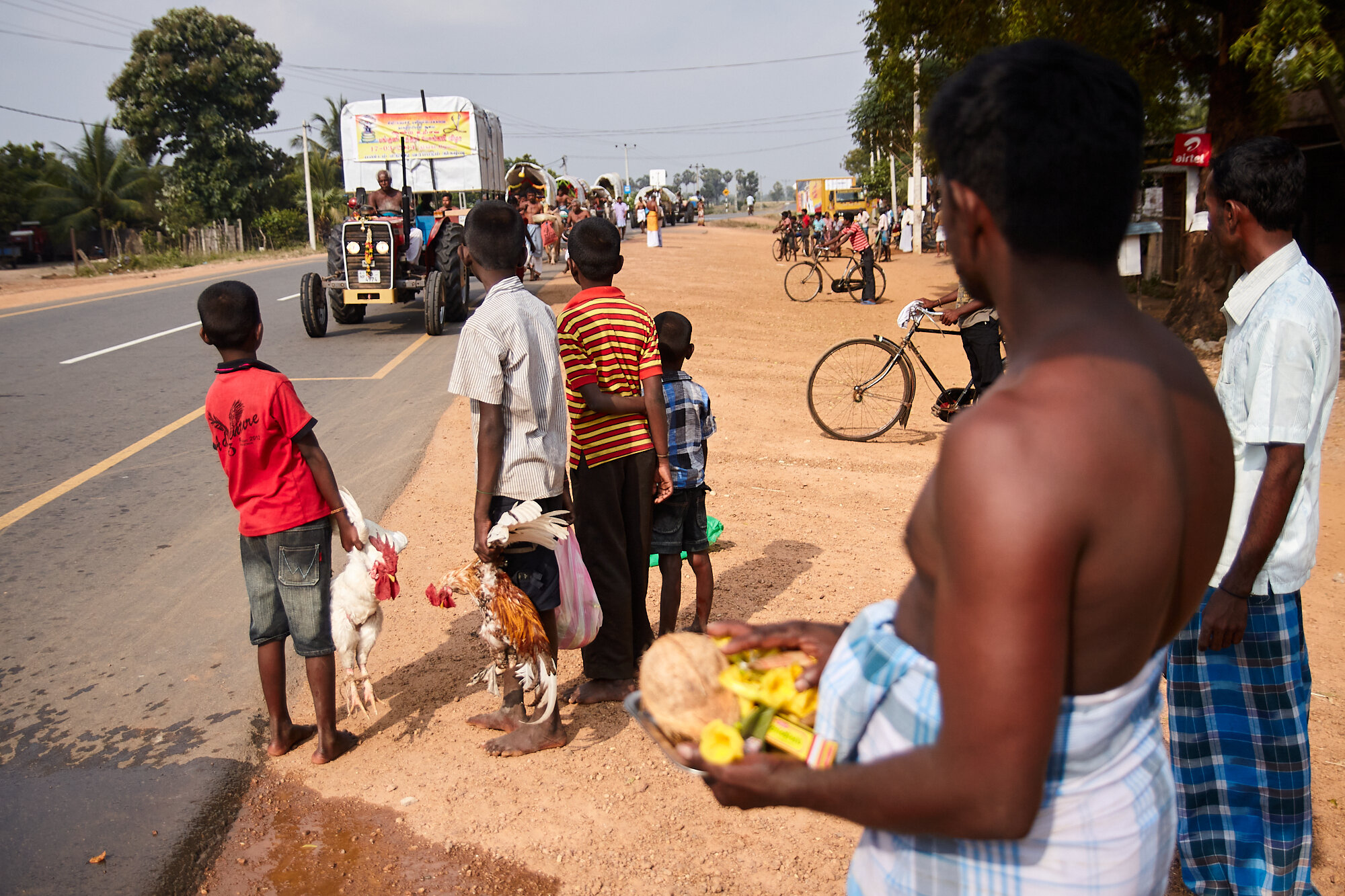
Villagers are waiting with the offerings for the small party of temple bullock carts which started the journey last night from another temple some 60km away.
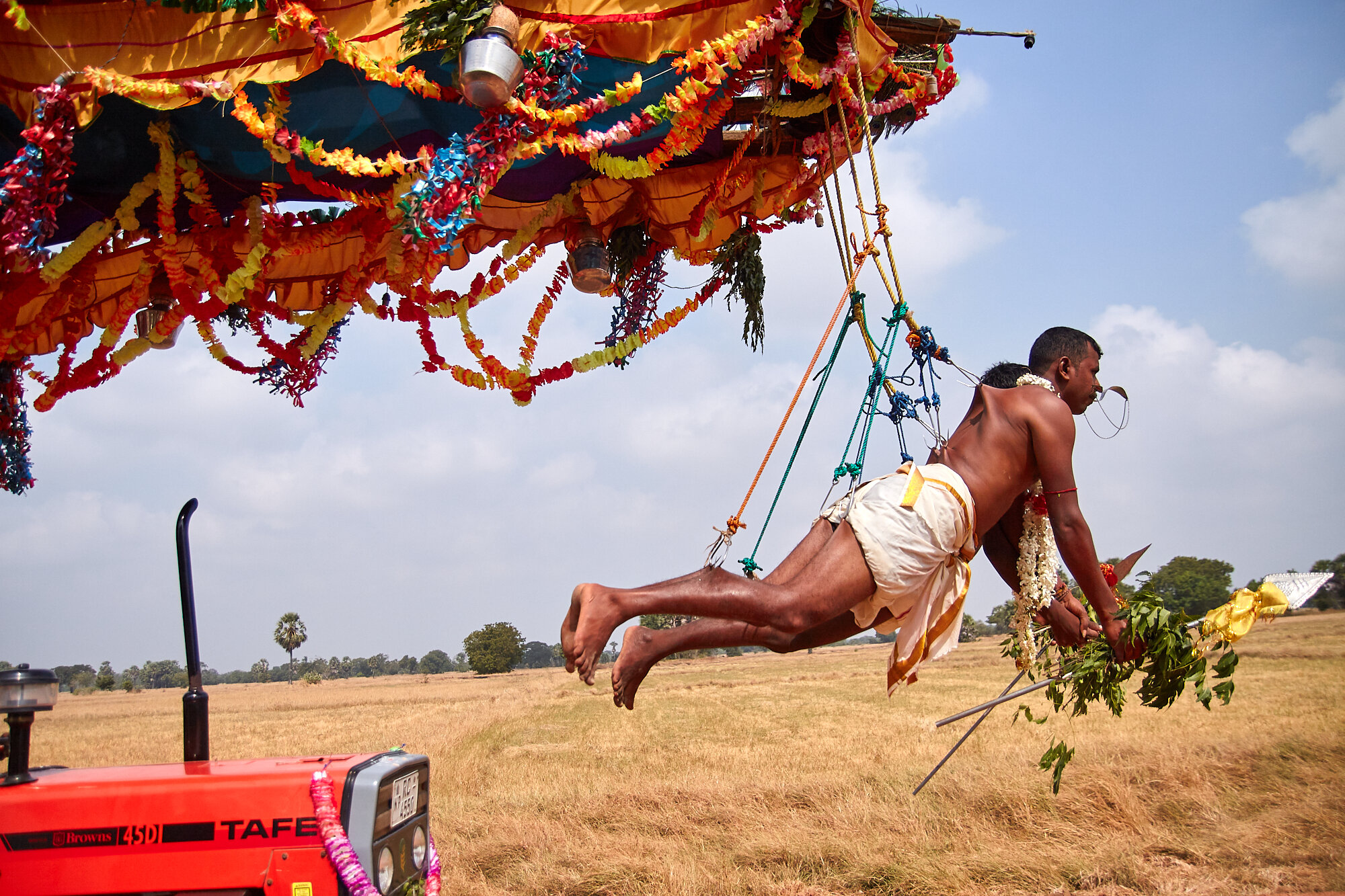
'Thookku Kaavadi' is one of the most extreme level of the hindu worship. Usually this is part of the wish for better luck and blessing from the higher power. Multiple hooks pierce through the skin and the devotees hang from a larger platform which is then moved up and down, often aggresively during the latter stages. The platform is mobilised with the help of a tractor for long distance towards the temple.
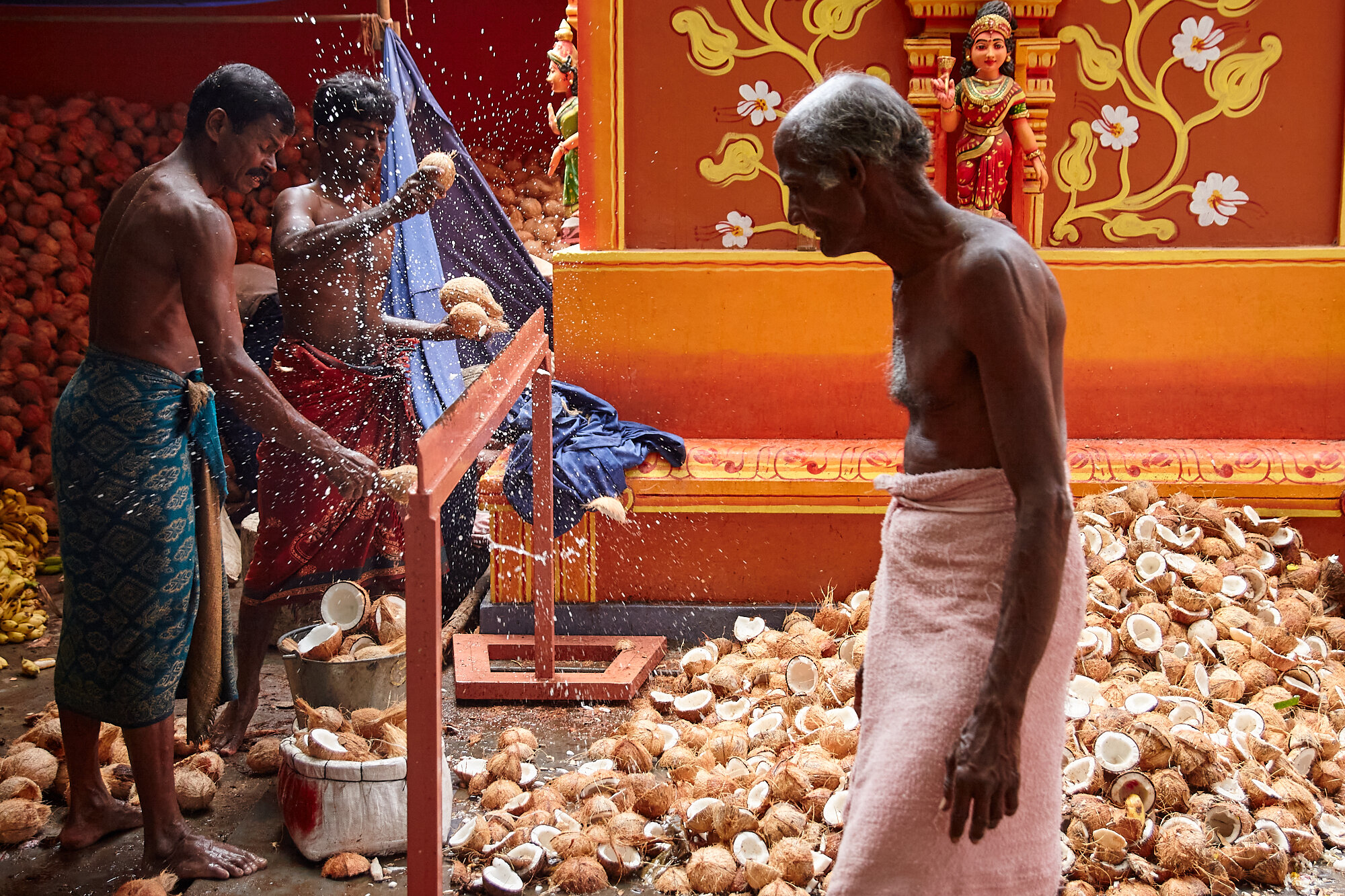
Thousands of coconuts which were offered to the god were being splitted into half at the back of the temple. These will then be offered back to the devotees, while some endup as coconut chips to the kids hanging around here.

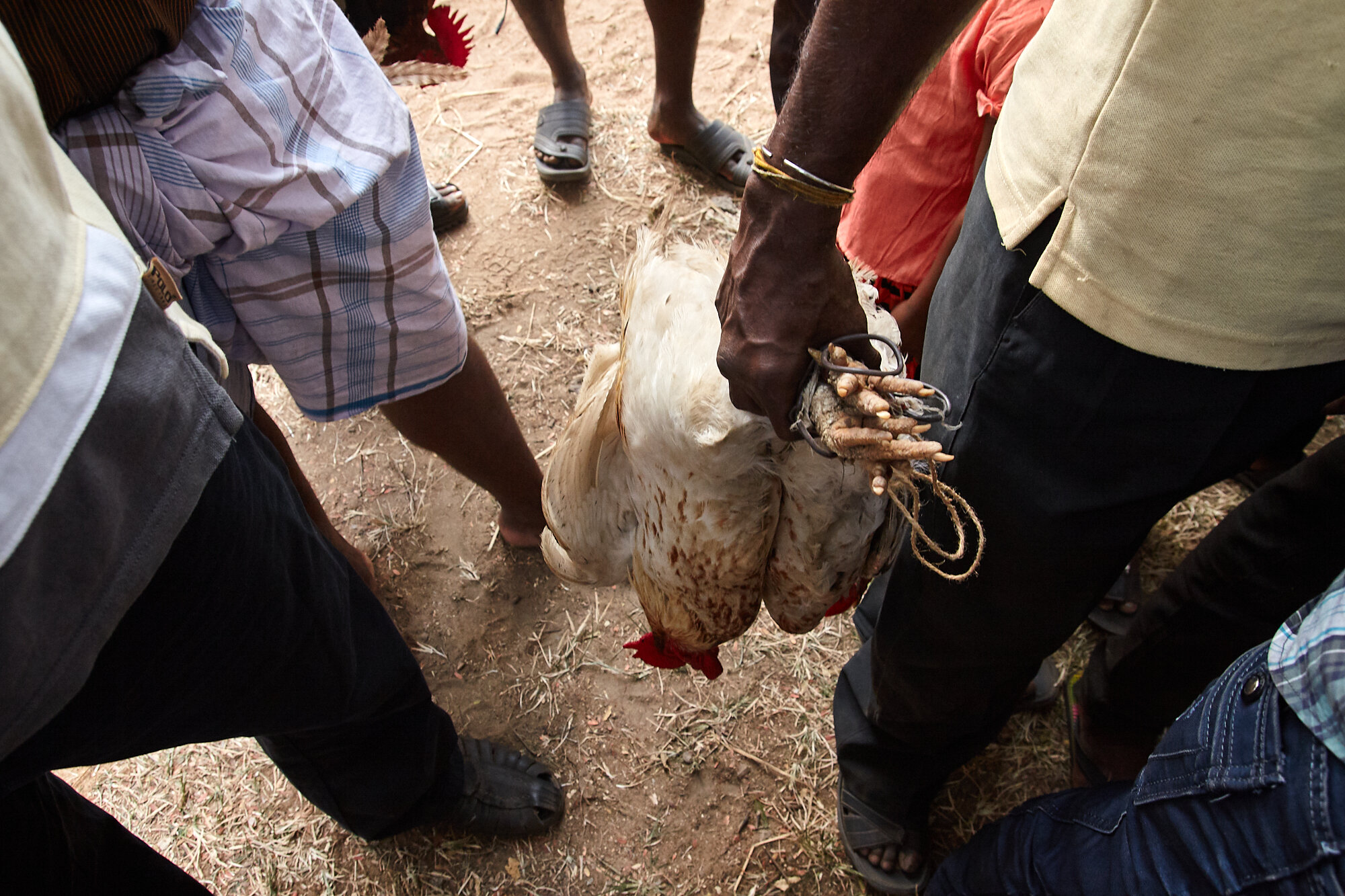
The roosters that were sold at an auction. Their fate remains unknown, and often unpredictable anyways when the contest is furious between the tastebuds and faith.
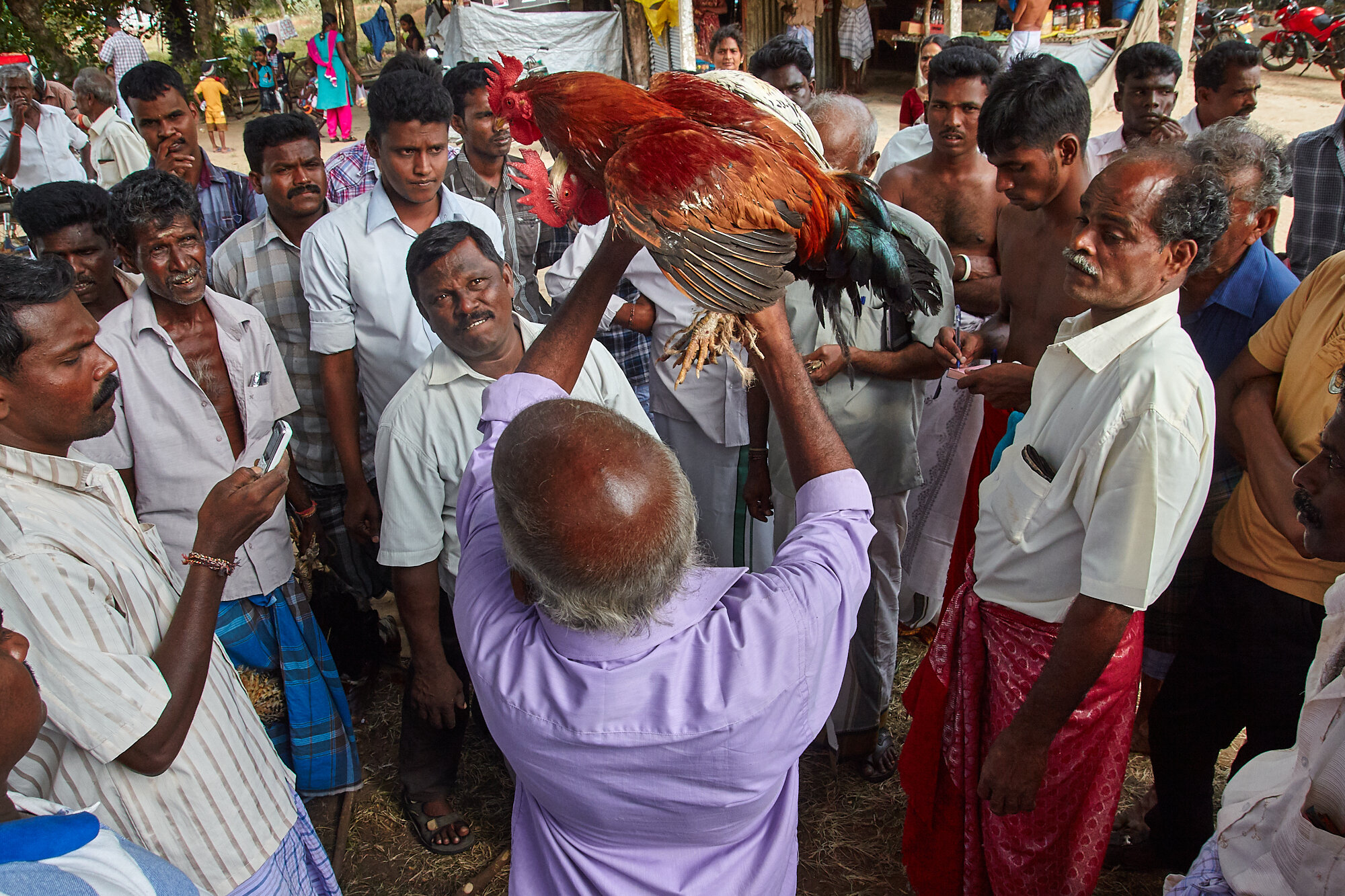
The birds collected as offerings during the journey are being sold at an auction near a village market en-route to the temple.
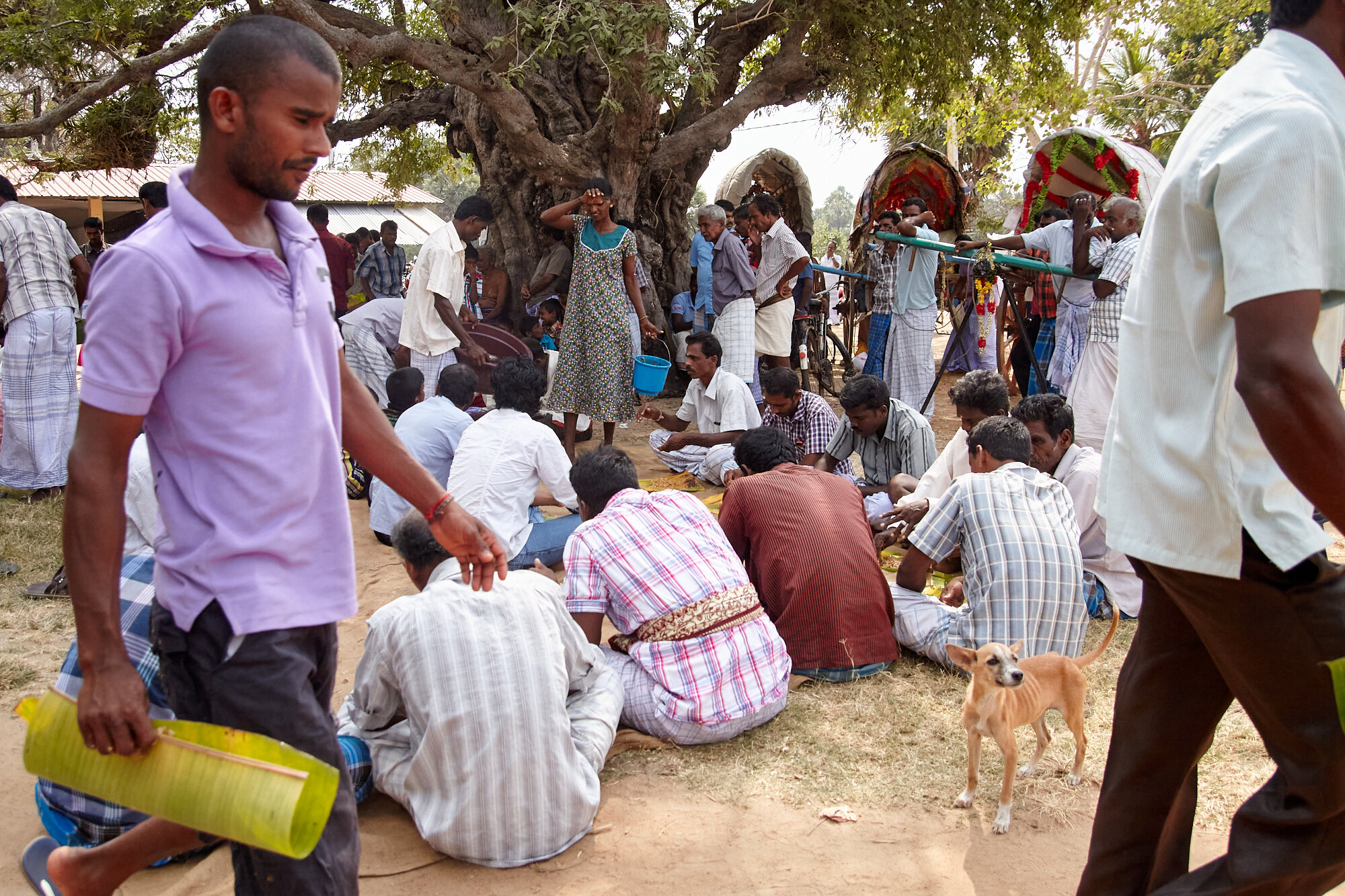
At certain locations the temple party and the followers are being greeted by servings of hot lunch consisting rice and curries on banana leaves. These free meals are some of the most important part of majority of the hindu festivals.
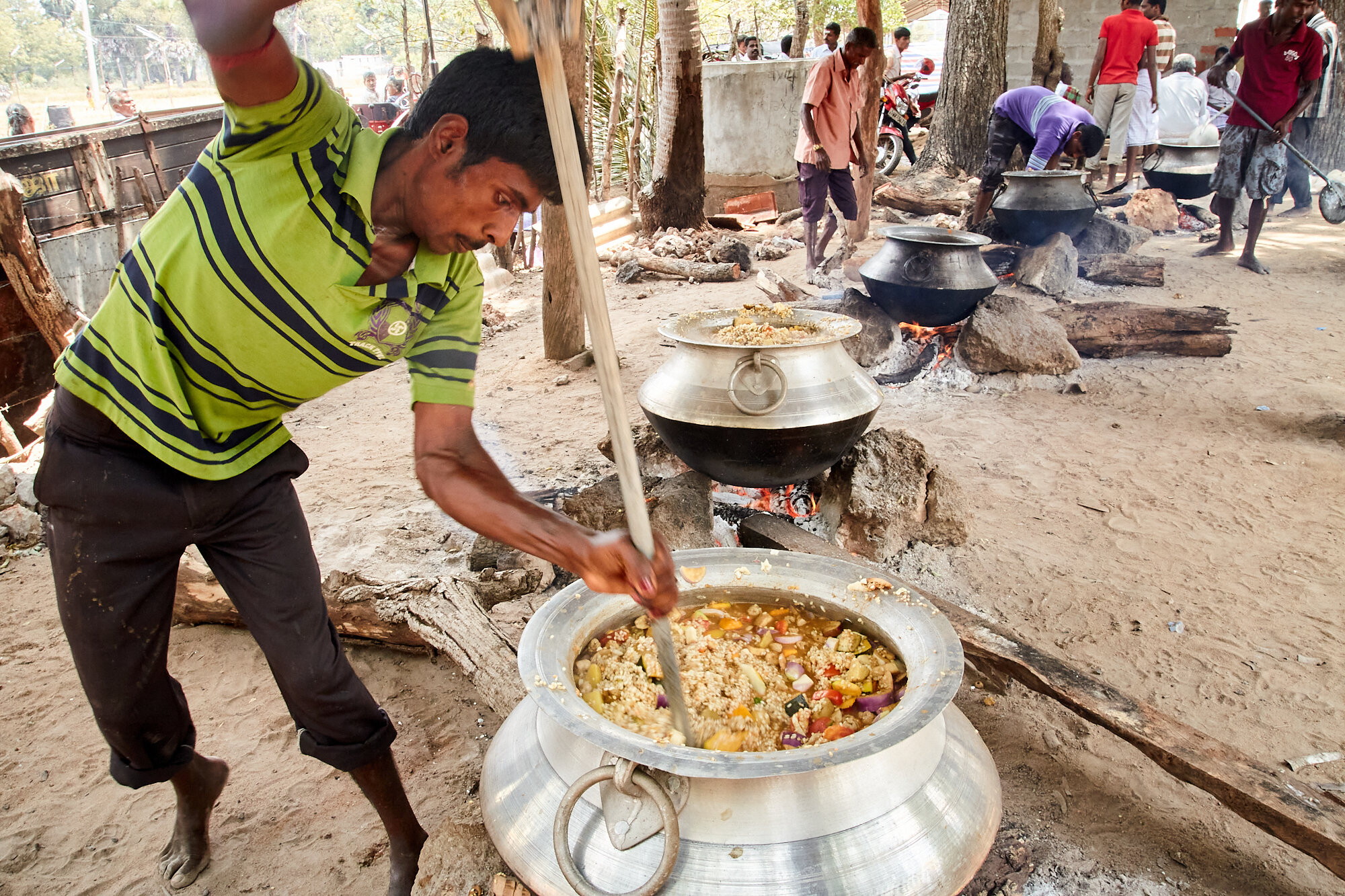
Meanwhile at the main temple free meals are being prepared to an extent that will feed hundreds if not thousands of devotees.
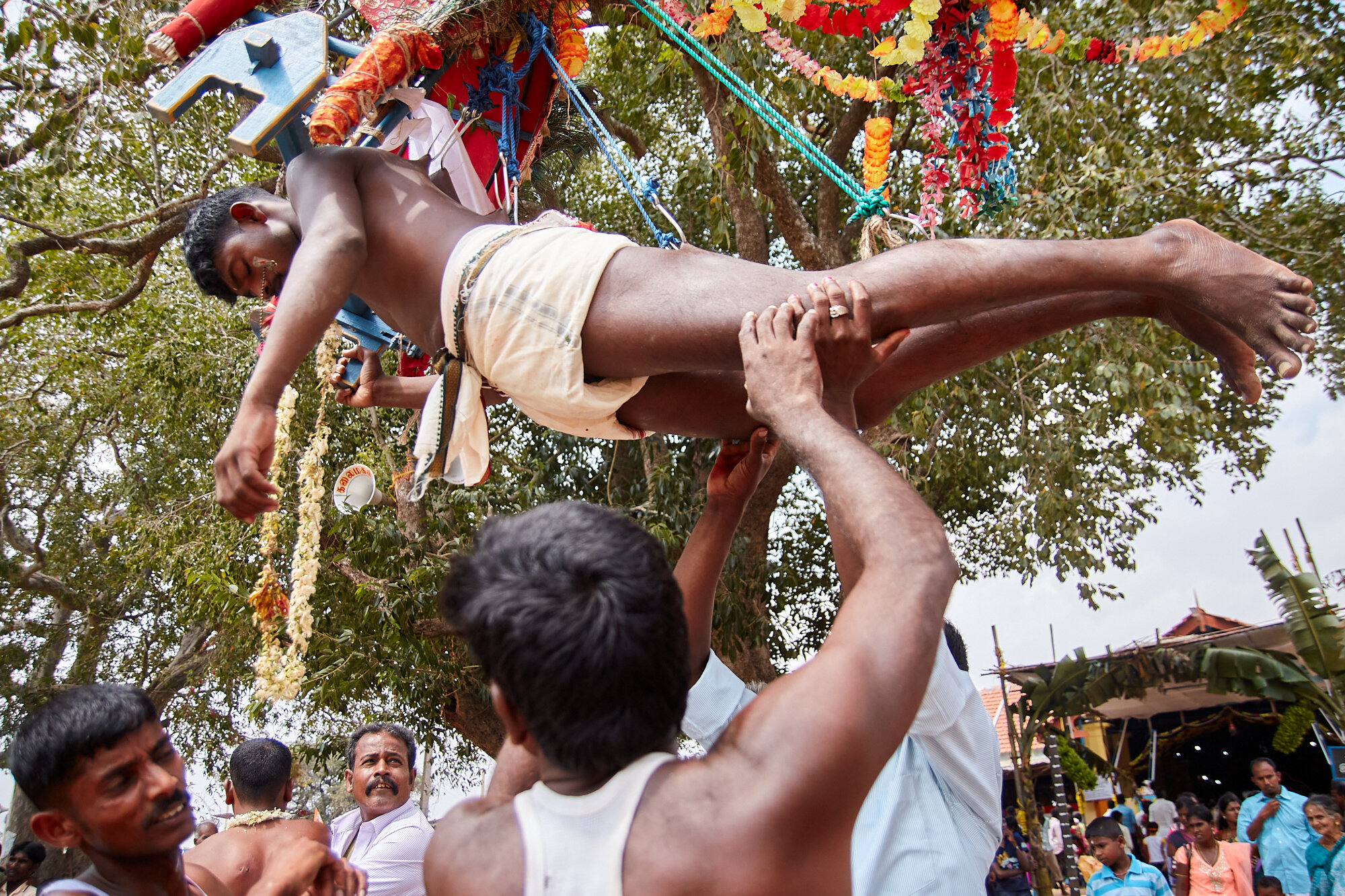
Often the rituals end up unexpectedly. Here a devotee just fainted while hanging on hooks. I once saw a man rushed into an emergency department where I worked as a medical officer with multiple fractures in all four of his limbs afte a fall from a similar structure.
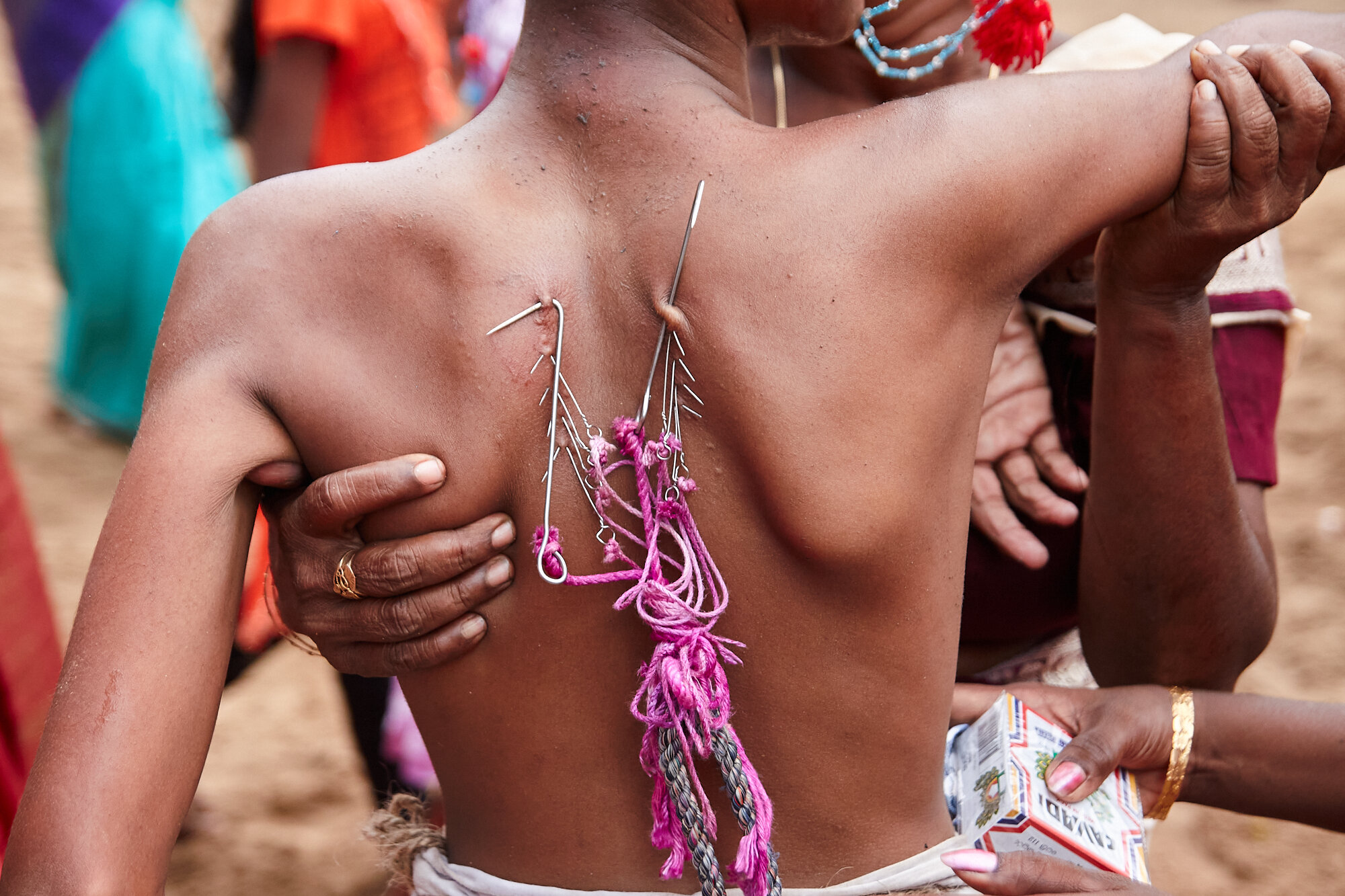
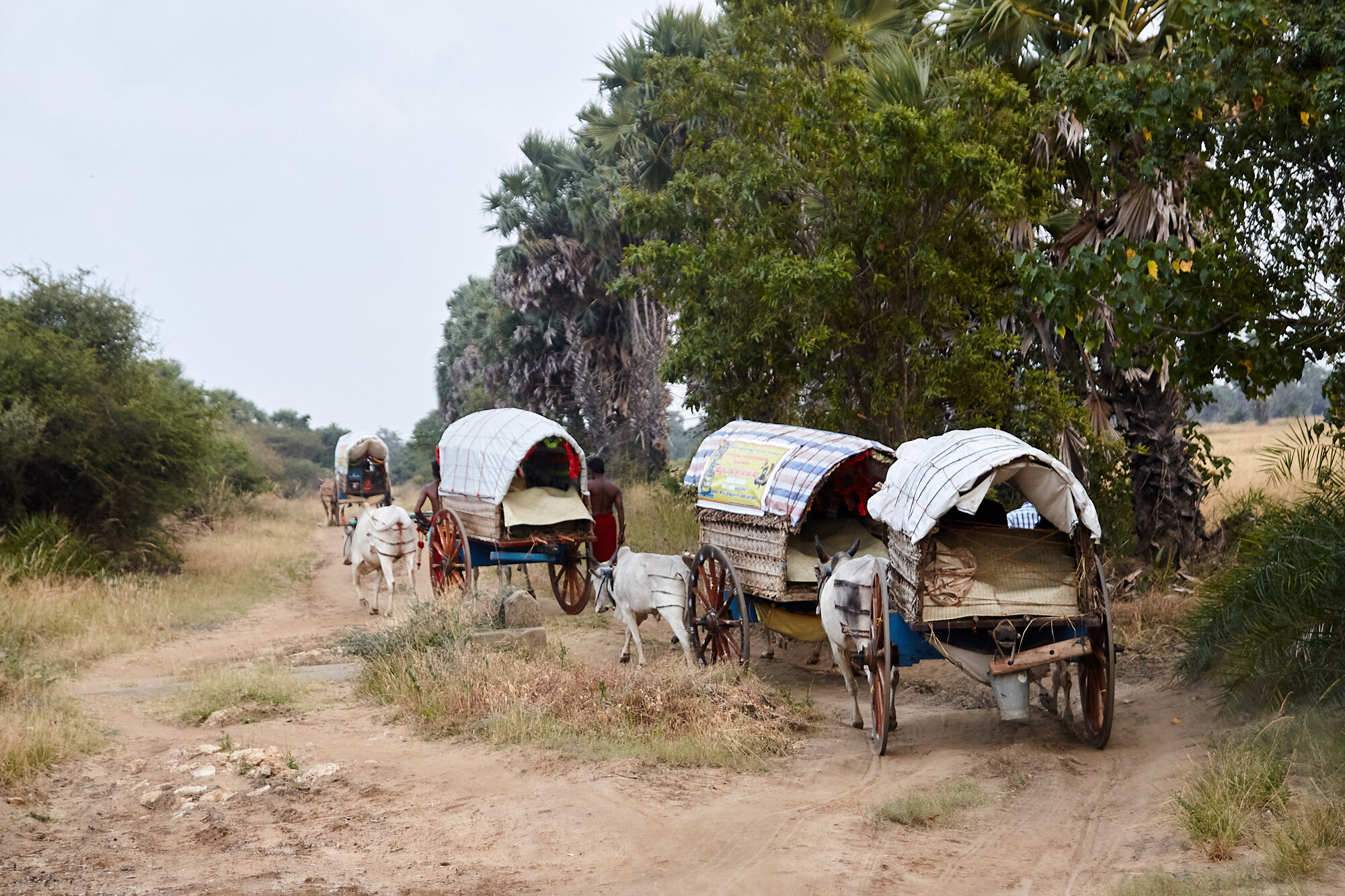
Meanwhile the temple party is traveling through rough terrain , dried up rivers, and uninhabited lands which were once the prime war zones during the decades long civil war in the region. After a day long journey the carts will finally reach the temple roughbly around the night fall.
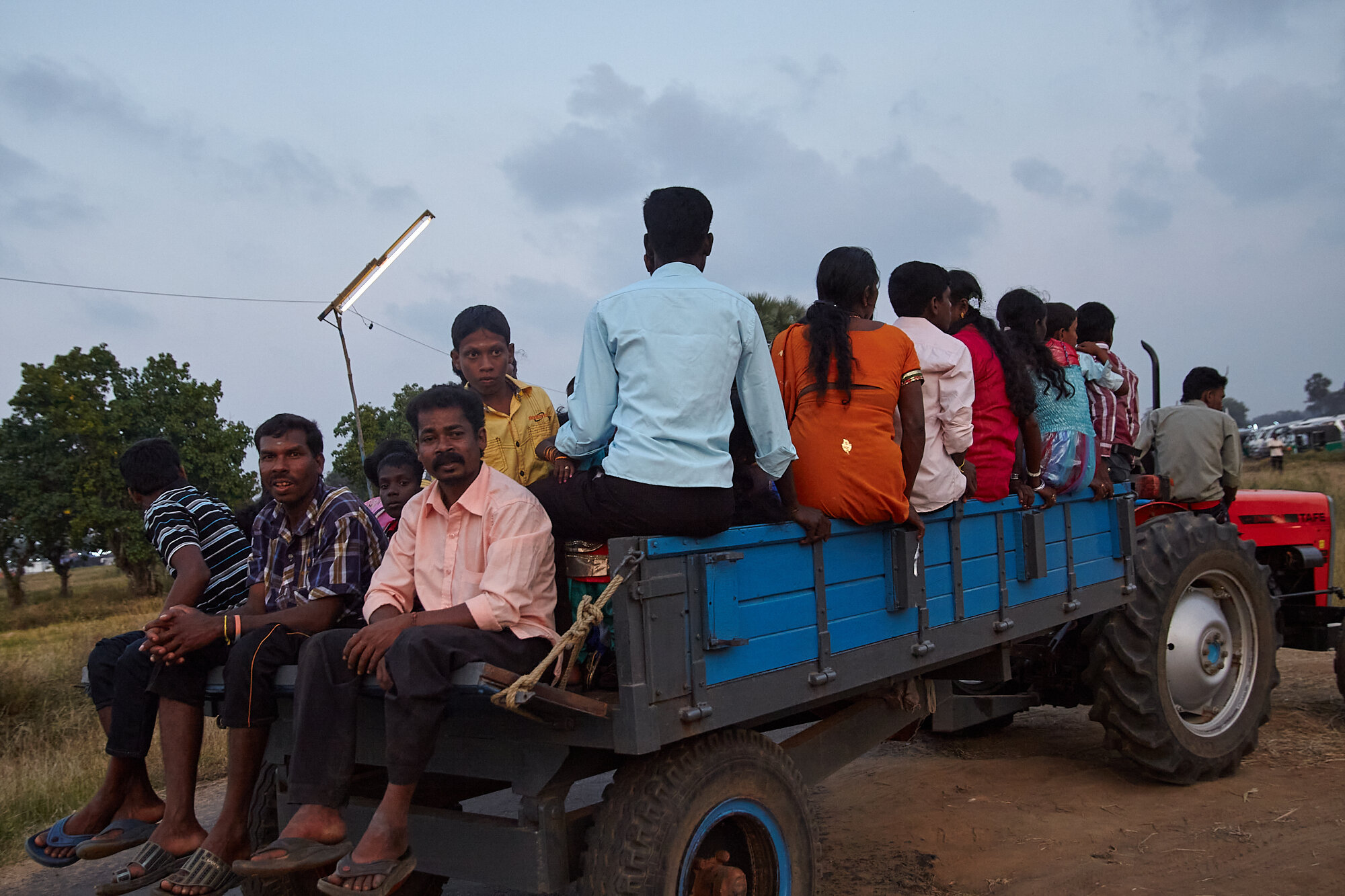
Villagers arriving to the temple in trailers connected to the tractors. This is a well established and cost effective method to transport large number of people in the region.
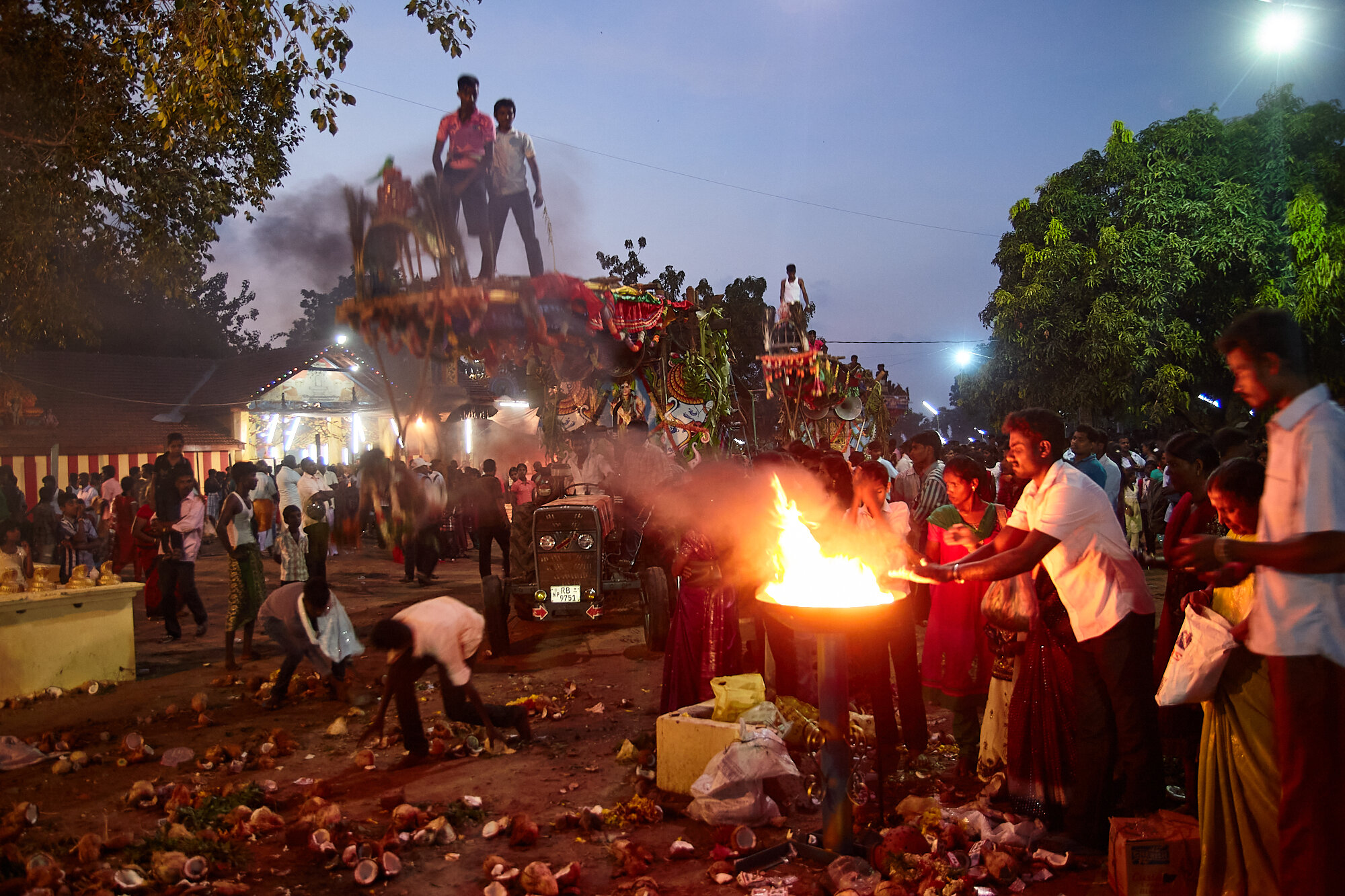
With the passing time the temple premises becoming more chaotic with heaps of devotees getting concentrated in one small place.

As the night falls the rituals turn to their peak intensity. A pretty confusing visual and auditory treat for the onlookers.
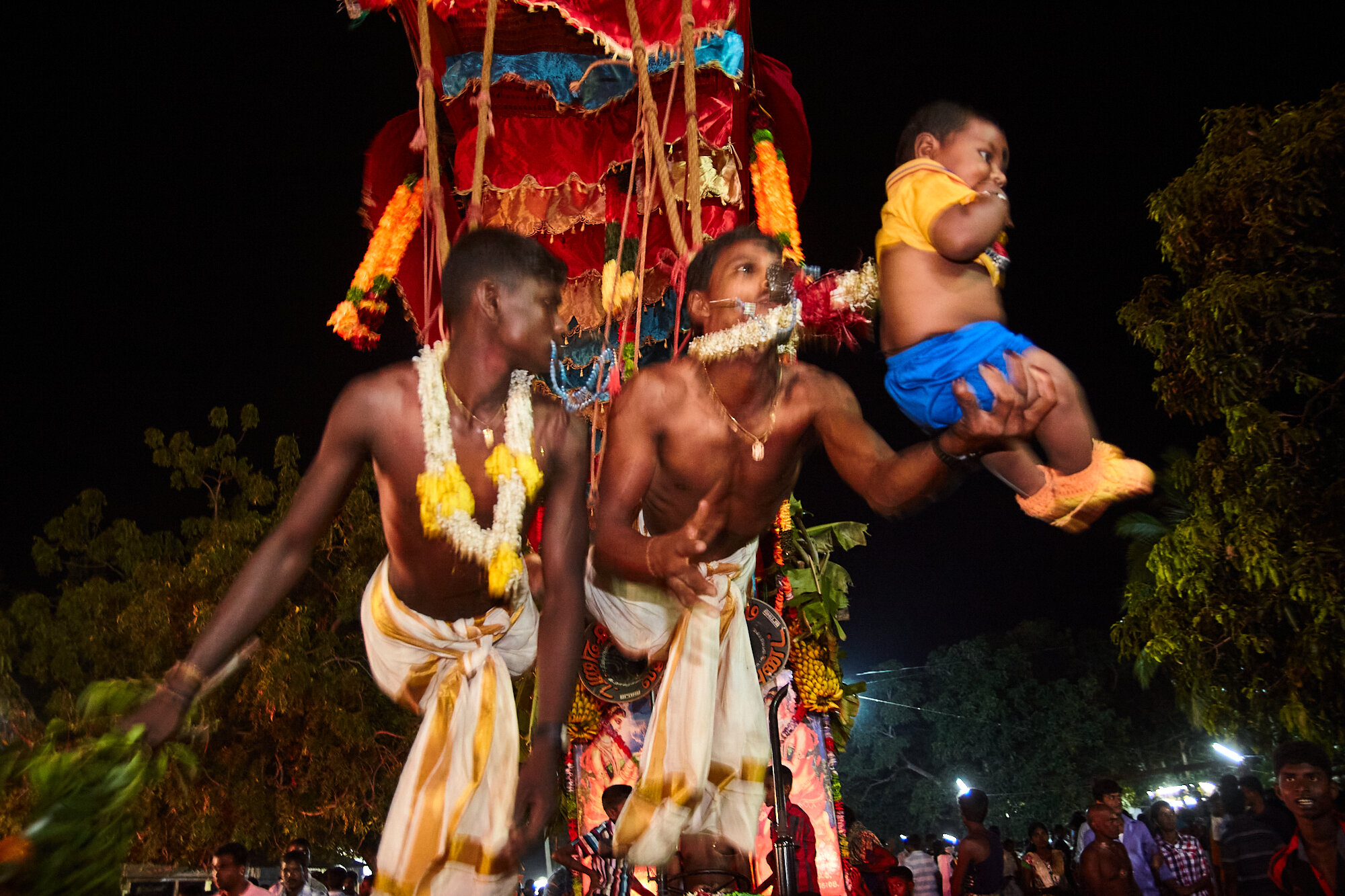
A child was given to the men hanging on the hooks. Hopefully with the trust on the energy of the tired man the child will pendulate for several cycles which equates to him being actually performed the ritual.
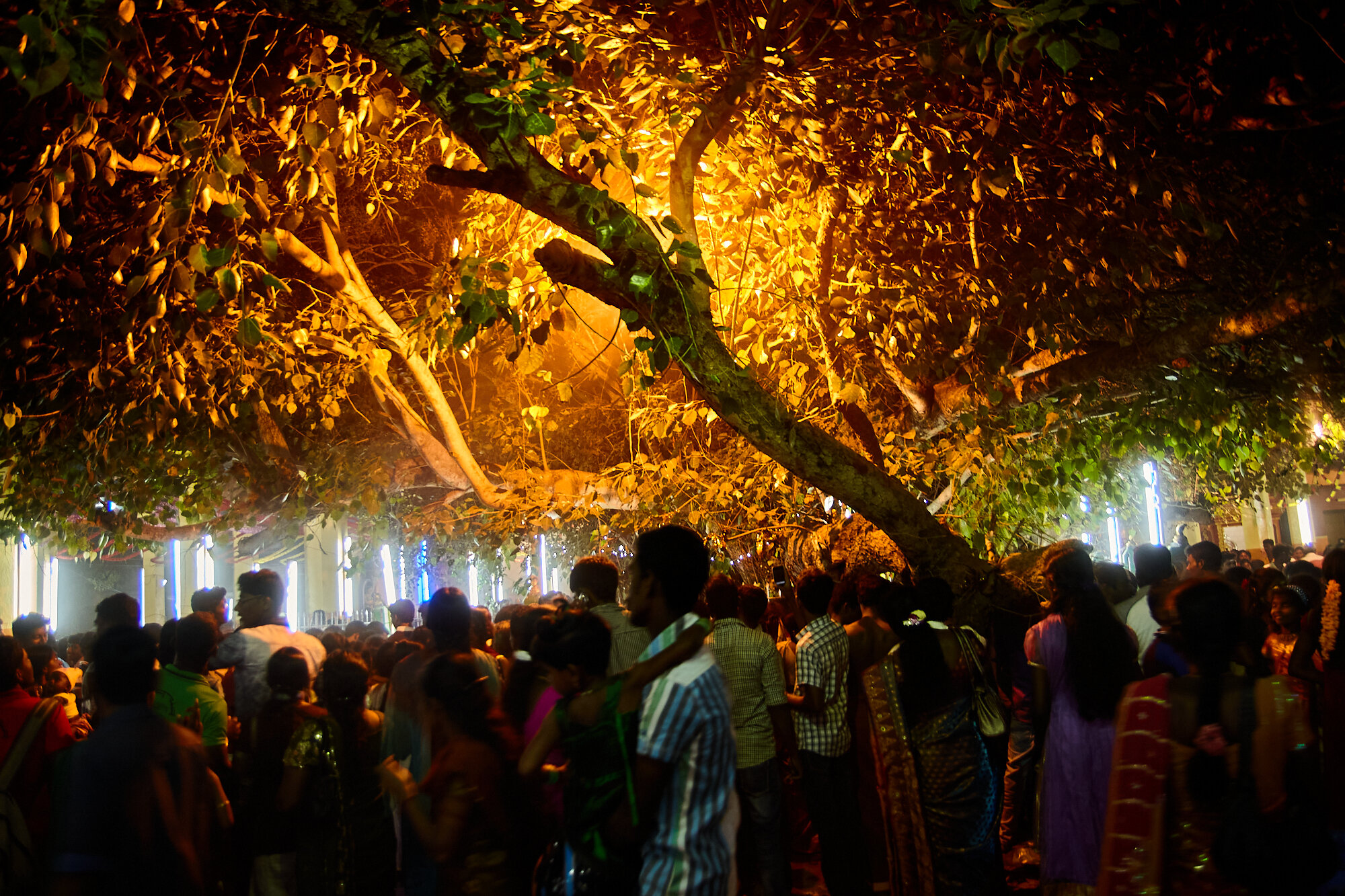
It is believed that at an auspicious time during the festival the cobra finally arrives at the holy tree inside the temple. While there were numerous accounts to claim that it actually happens often closer to midnight, sometimes it is not just the case in certain years. However majority of the people strongly believe that the cobra is still living in the tree.
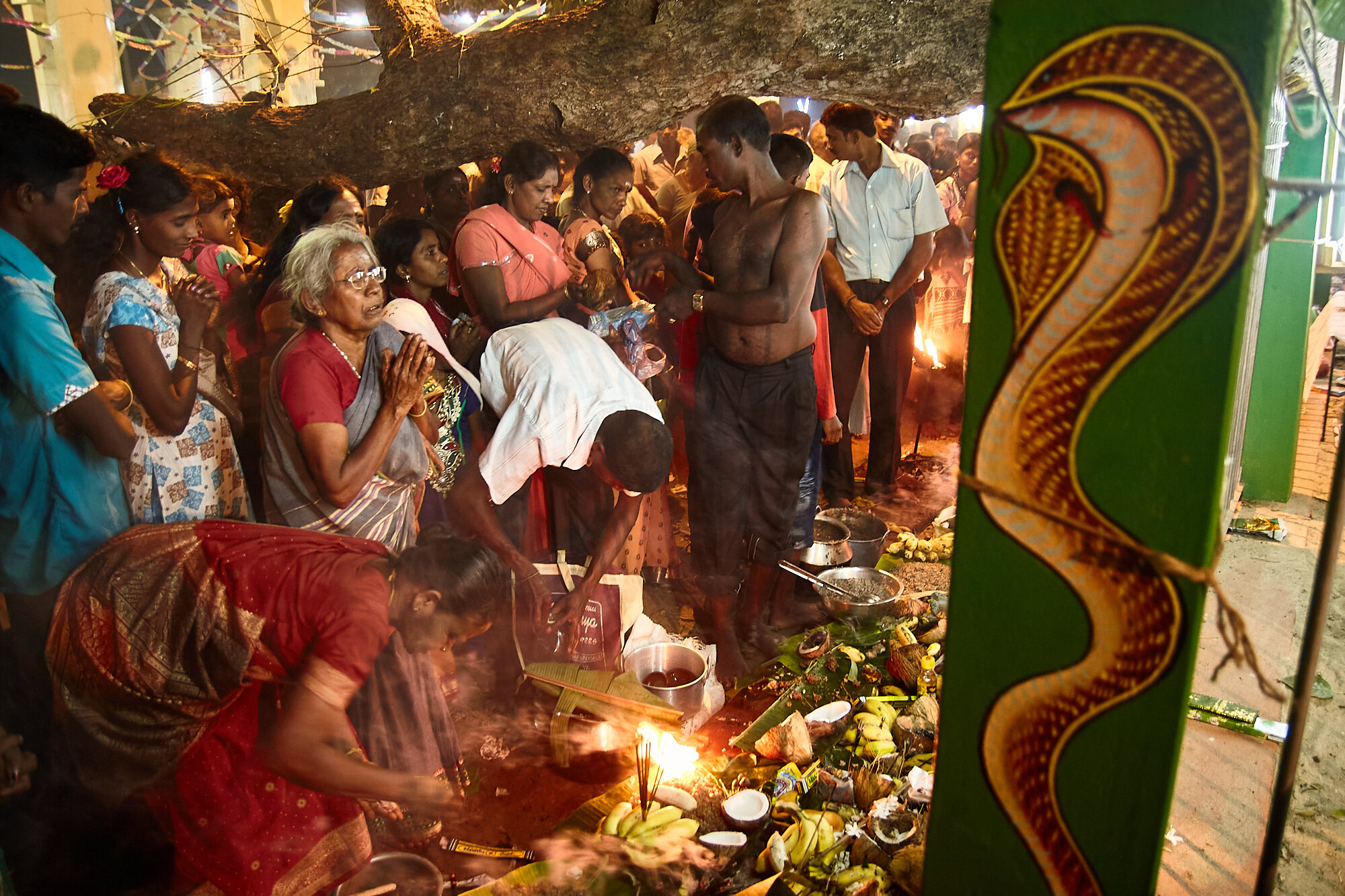
Devotees keeping the offerings around a tree where the holy cobra lives and prey for a best future, and the answers for the past.
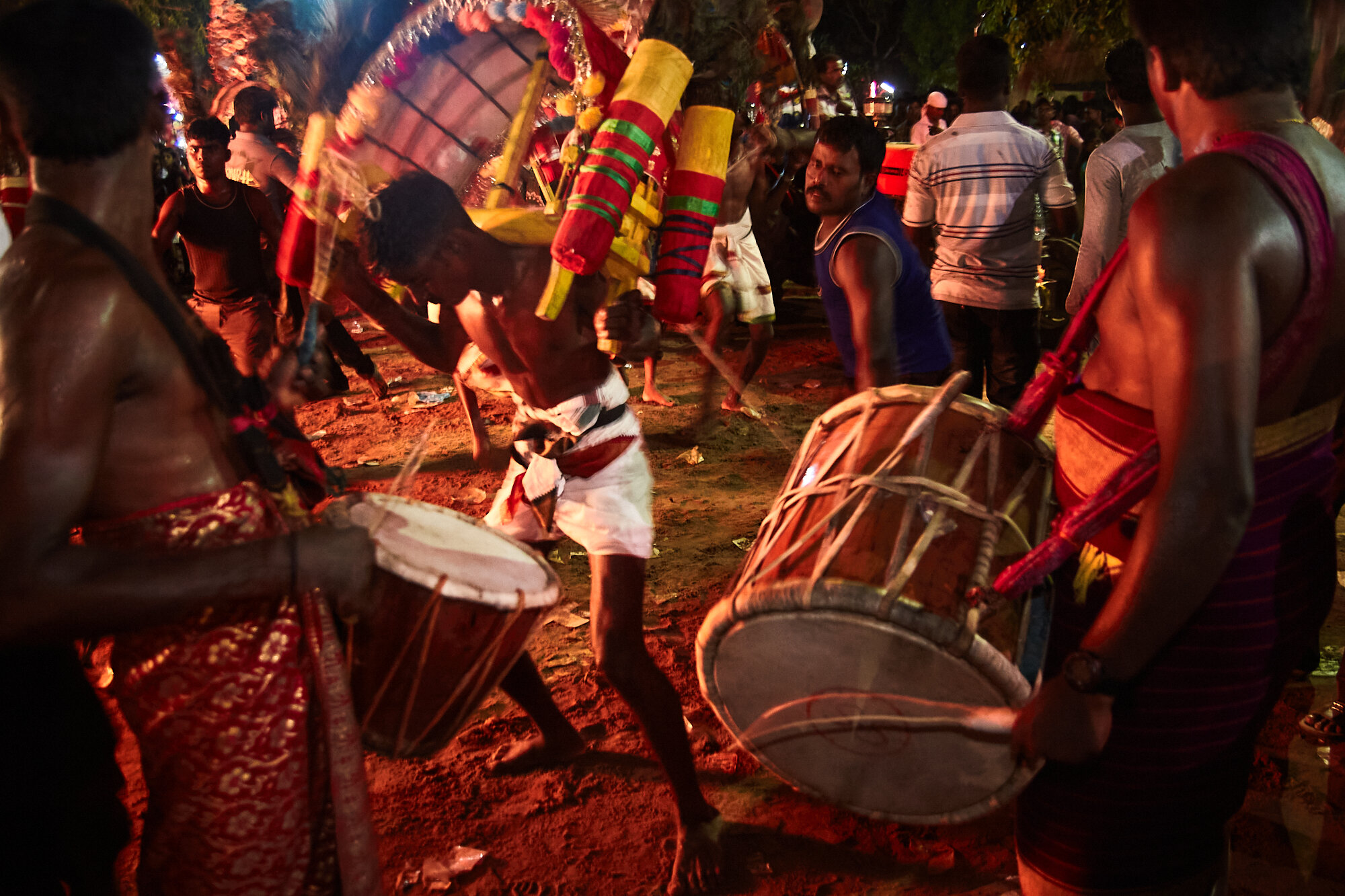
By around 9pm the rituals are still continuing and will do so for many hours to come. It was a test of the human endurance towards higher faiths.
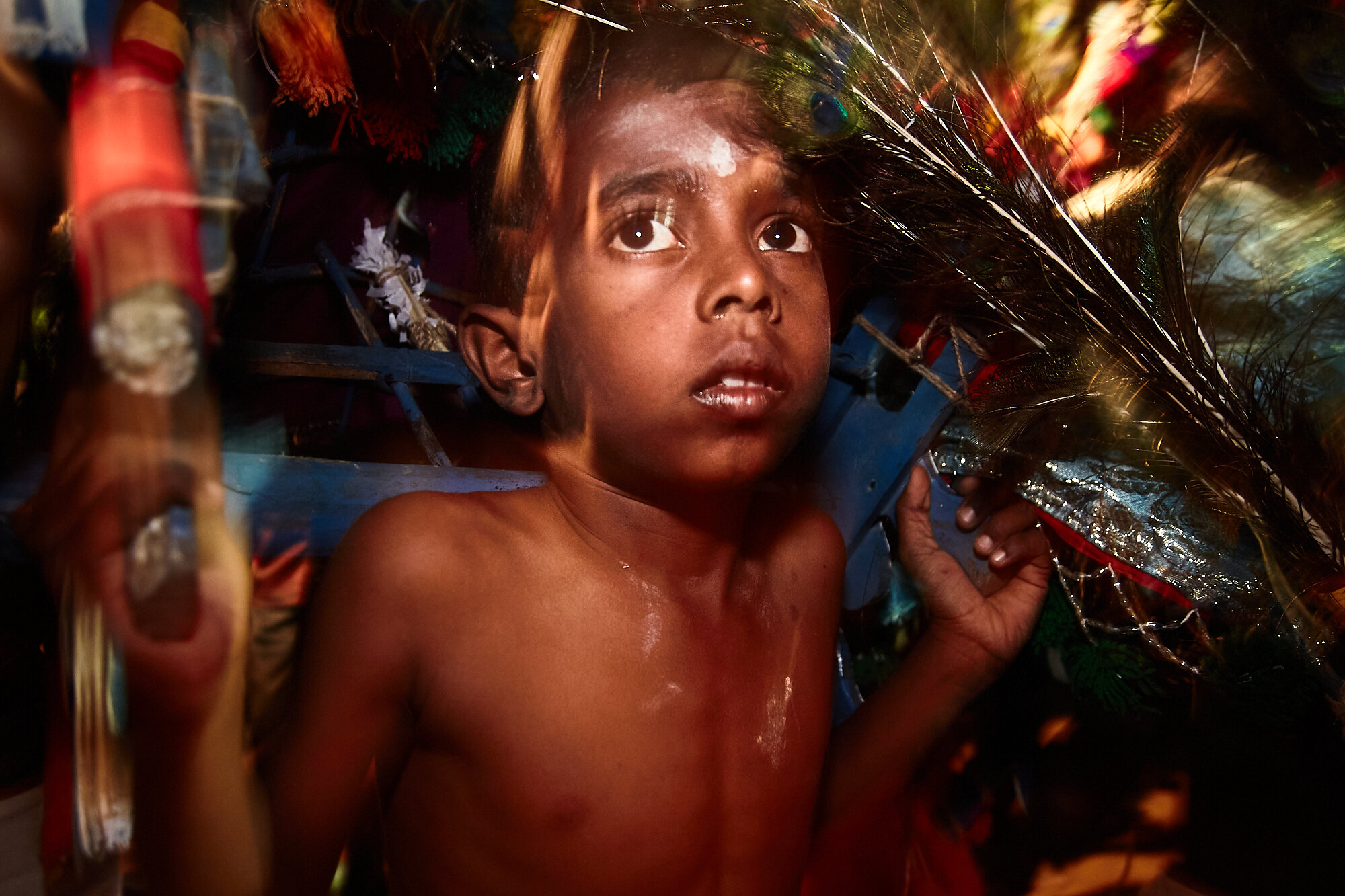
A young Kavadi dancer at the festival.
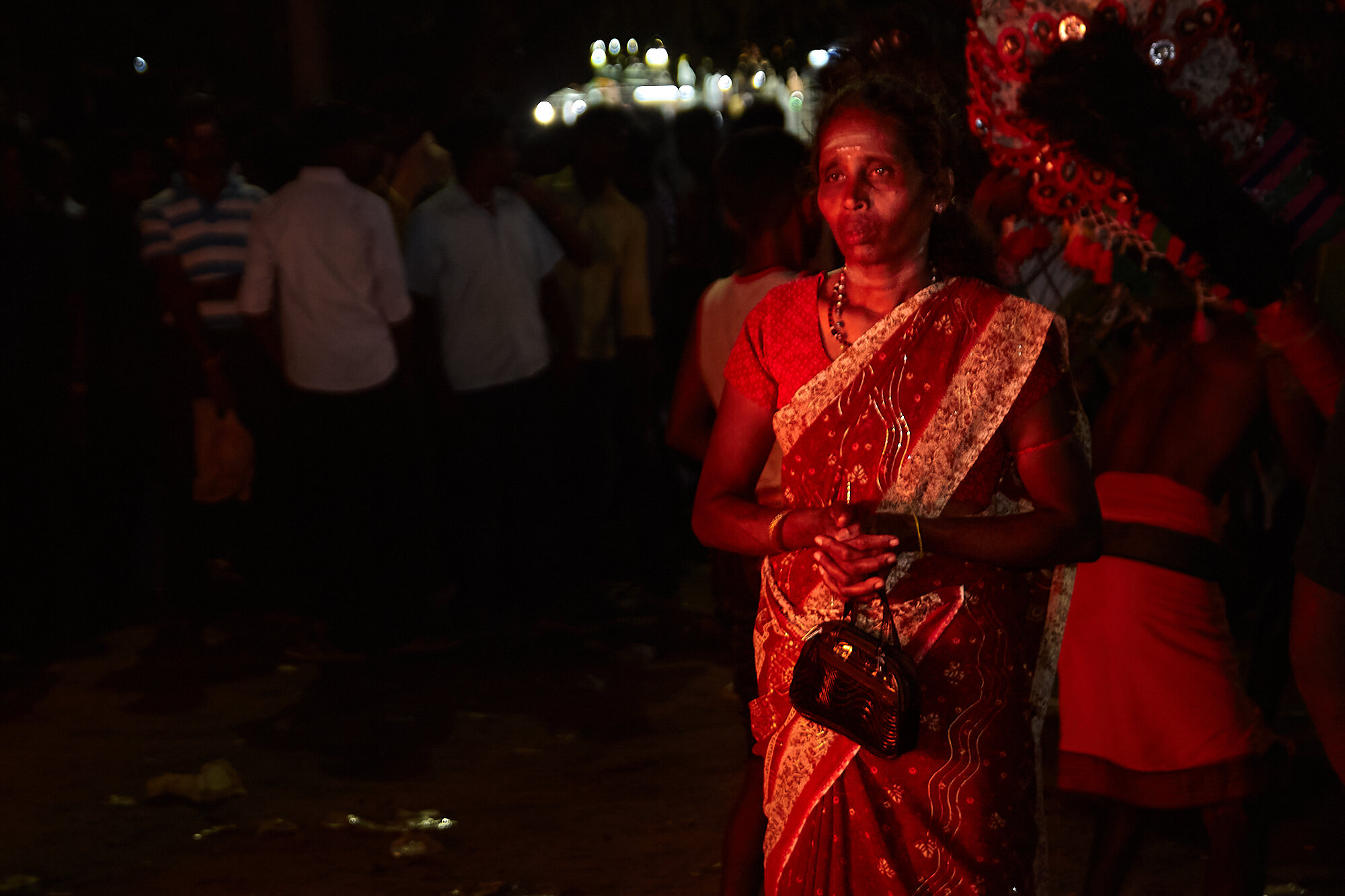
Significant numbers of these people have lost their family members and relatives to the brutal civil war that lasted around three decades. Many of the members were actually unaccounted or last seen alive and many of the remaining family members still being hopeful that the missing persons will return home one day. In January 2020, roughbly eleven years after the war has ended, the president of Sri Lanka declared that the missing people are actually dead.
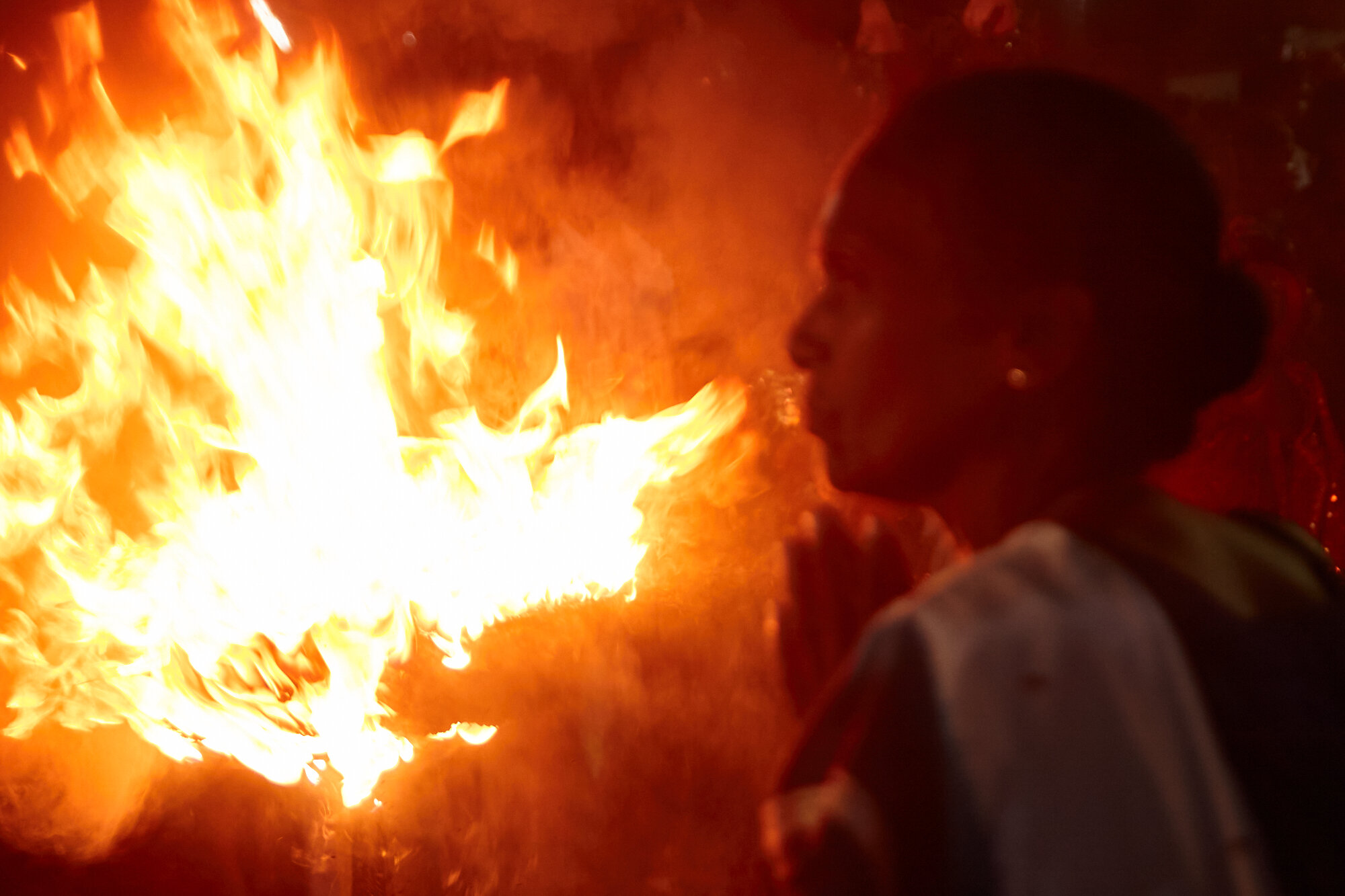
Fire plays an important role in Hindu worships. It resembles energy and people continued to put camphor so the fire will continue, thus the collective energy.